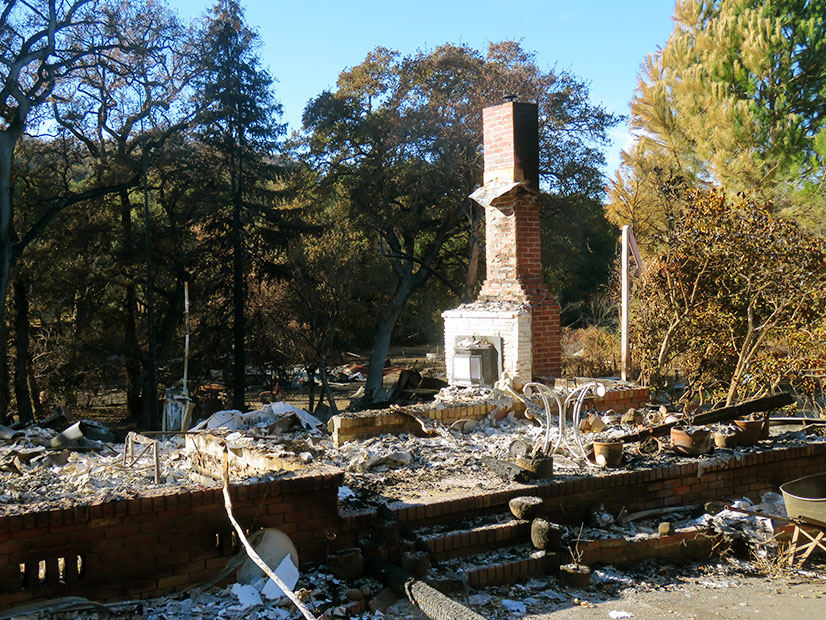
California’s largest utility is counting on the state’s Public Utilities Commission to approve $7.5 billion in corporate bonds this week to refinance roughly $6 billion in debt incurred during its Chapter 11 reorganization and to accelerate payments to a multibillion-dollar fire victims trust that was part of the bankruptcy settlement.
“We expect the CPUC to vote out the decision on the financing order on May 6, giving us the authority to issue securitization bonds,” CFO Chris Foster told analysts on the company’s first-quarter earnings call. “We plan to move expeditiously to issue the securitized debt once the decisions become final and non-appealable.”
Legal challenges could delay the process, “but we expect to complete this issuance later this year or early 2022,” Foster said.
PG&E increased its estimated legal fees and associated bankruptcy costs by $30 million; those costs now total $1.4 billion to $1.5 billion, Foster said.
It also raised its projected liabilities for the 2019 Kincade Fire in Sonoma County and last year’s Zogg Fire in Shasta County, neither of which was part of the bankruptcy proceeding.
For the Kincade Fire, “we have increased the claims accrual by $175 million to a total of $800 million,” Foster said. “I’ll also note that we increased our accrual for claims related to the Zogg Fire by $25 million to a total of $300 million,” most of which will be covered by insurance, he said.
The company reported first-quarter 2021 GAAP earnings of $120 million ($0.06/share), compared with earnings of $371 million ($0.57/share) in the first quarter of 2020.
The company’s stock price — which had topped $70/share in September 2017 but plummeted in late 2018 and early 2019 because of fires and bankruptcy — lagged in the past year. It fell 3.6% to $10.42/share after Thursday’s earnings call but rose to $11.32/share by the time the market closed Friday.
The fire victims trust owns 478 million shares of PG&E, or nearly 23% of the company. In a letter to fire victims in April, the trustee, retired California Court of Appeal Justice John Trotter, said he is exploring the sale of an unspecified amount of PG&E stock.
Charges and Probation
The utility’s financial outlook remains clouded by pending criminal charges and ongoing wildfire litigation.
On April 6, the Sonoma County district attorney’s office filed 33 criminal charges against PG&E in connection with the Kincade Fire, a 78,000-acre blaze that injured six firefighters, destroyed 374 structures and led to mass evacuations. The California Department of Forestry and Fire Protection determined that a PG&E transmission line sparked the fire.
The complaint accuses PG&E of committing five felonies and 28 misdemeanors, including “recklessly causing a fire with great bodily injury” and a felony charge of emitting harmful airborne contaminants, injuring children. (See Prosecutors Charge PG&E for 2019 Kincade Fire.)
PG&E has acknowledged its line started the fire but said it will fight the criminal charges.
“I would say this: The Sonoma County district attorney has a constituency. She’s elected. She has a job to do,” PG&E CEO Patti Poppe said on Thursday’s call. “We disagree with those charges. We don’t think there’s a criminal basis for those charges. We will fight those charges.”
Because of the new charges, federal prosecutors have asked U.S. District Court Judge William Alsup, in San Francisco, to find that PG&E violated the terms of its probation related to the 2010 San Bruno gas explosion. Jurors convicted PG&E of six felonies stemming from the disaster, which killed eight residents and destroyed part of a suburban San Francisco neighborhood.
Alsup scheduled a hearing for today on the prosecutors’ request for “revocation of supervised release.”
On Thursday, Alsup backed off his threat to apply new probation conditions to PG&E that would have required it to de-energize lines that had not been cleared of dangerous trees. Alsup had proposed the conditions after a leaning gray pine tree struck a PG&E distribution line, starting the Zogg Fire, which killed four people. (See Conflict over Power Shutoffs Grows in California.)
“Over many years PG&E robbed its tree clearance budget … to enhance the bottom line,” Alsup wrote in his order. “As a result, we now find ourselves with a power grid overgrown with hazard trees ready to strike onto PG&E’s lines during windstorms, spelling wildfire disaster in our dry season.”
He also cited PG&E’s responsibility for starting the Wine Country fires of October 2017 and the Camp Fire in November 2018. “In those, 107 victims were burned to death, and 22,060 structures were destroyed.”
PG&E pleaded guilty last year to 84 counts of involuntary manslaughter in the Camp Fire and a single charge of igniting the fire.
Alsup, however, said he would defer to the CPUC and state’s Office of Emergency Services, which asked the judge to reconsider ordering the probation conditions because they could result in more PSPS events.
The judge took issue with that analysis but issued only a recommendation that PG&E consider “the extent to which trees and limbs bordering specific circuits remain in violation of California law or its own wildfire mitigation plan” when deciding which lines to de-energize during wildfire season.
He said he would “leave to the utility the decision on the extent to which it will adopt the recommendation.”


